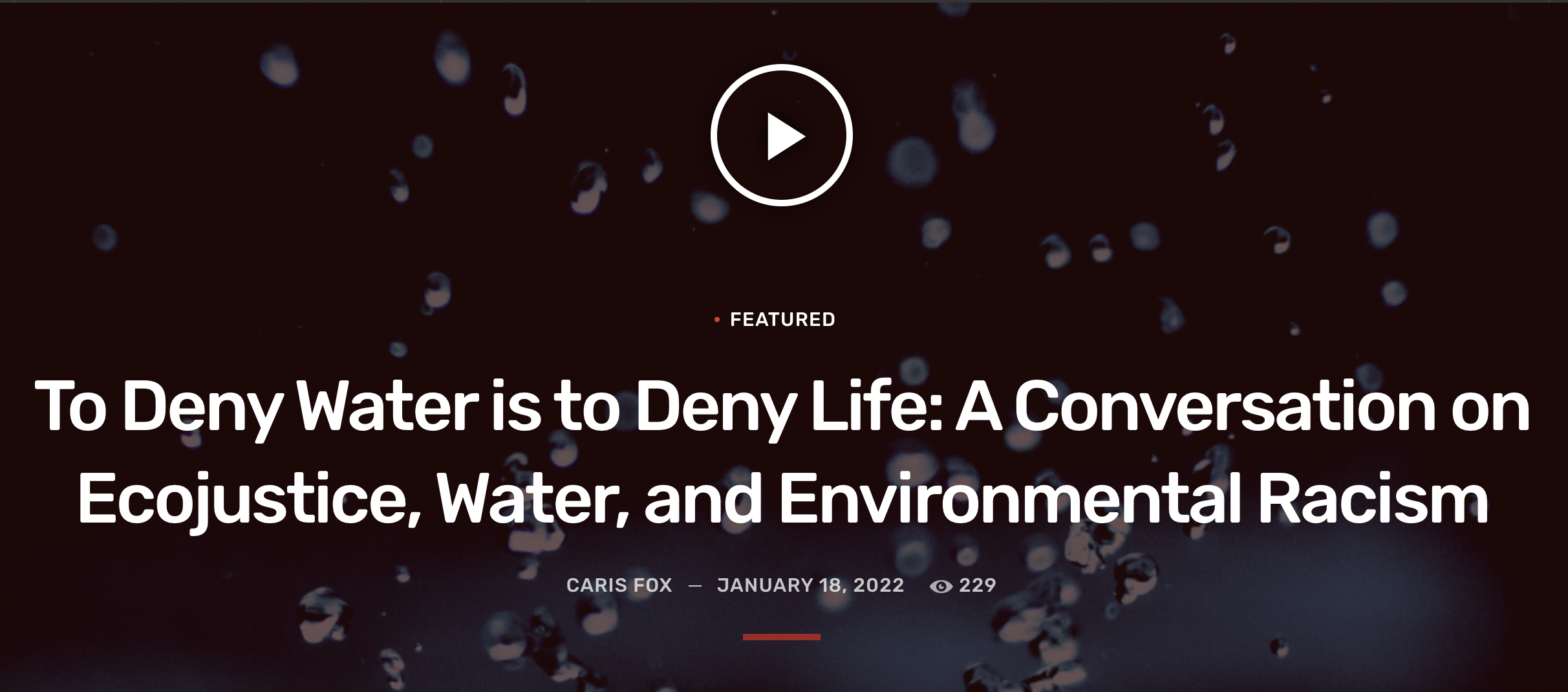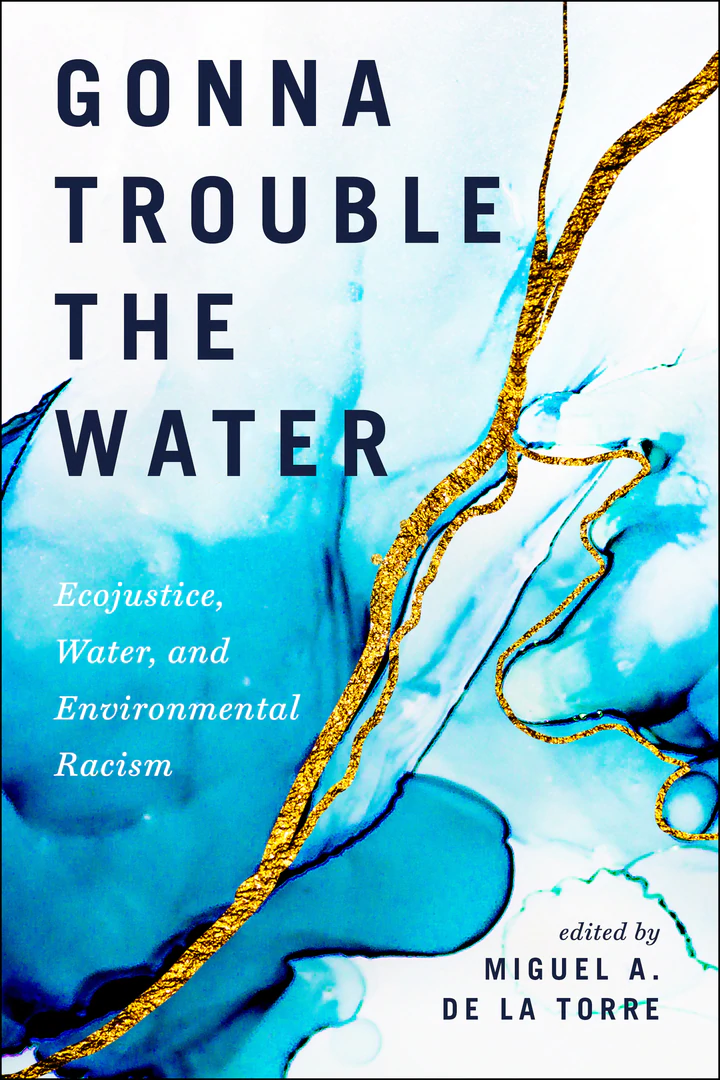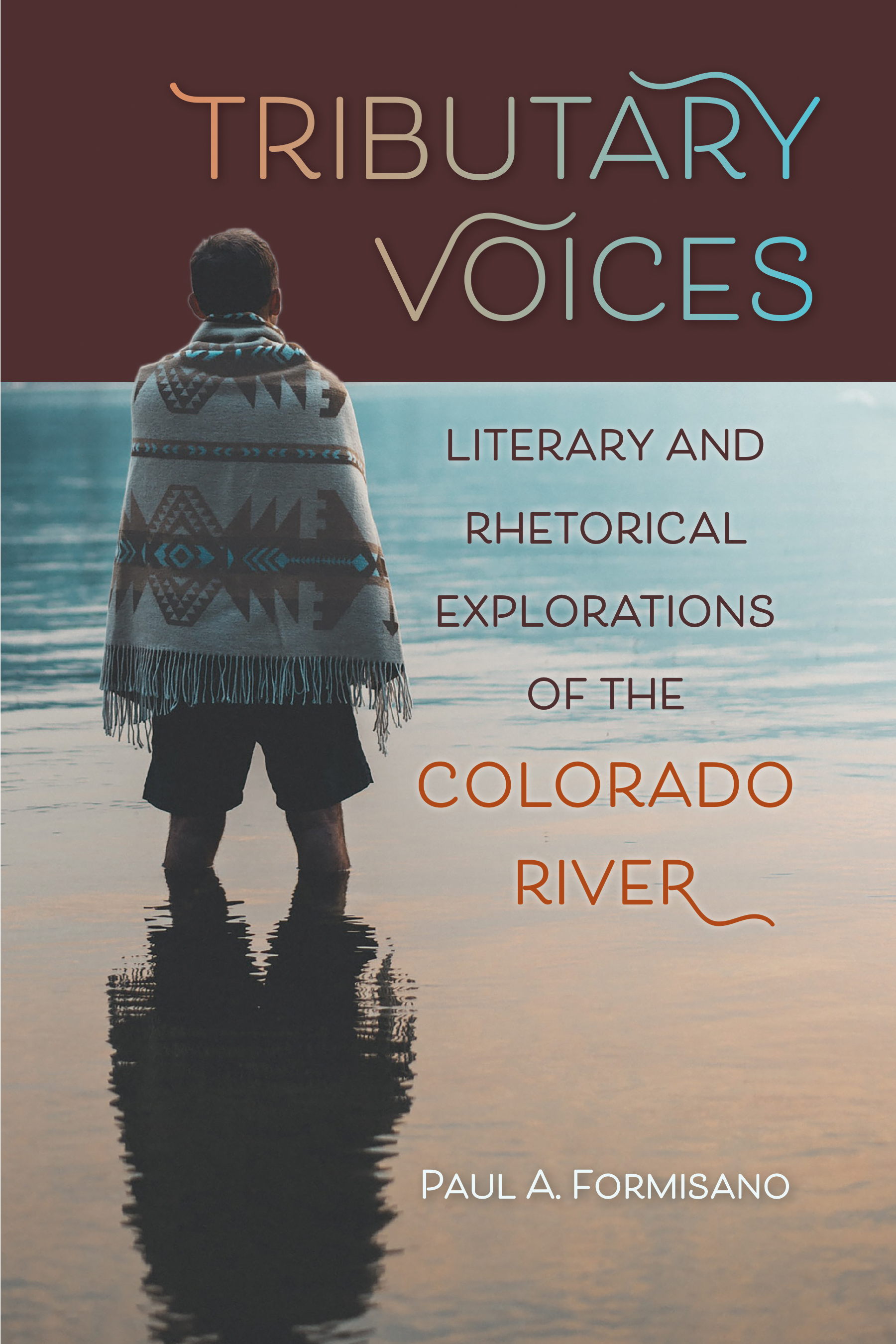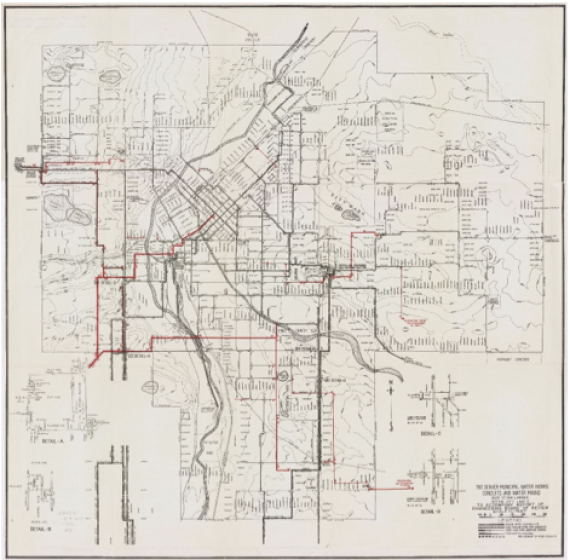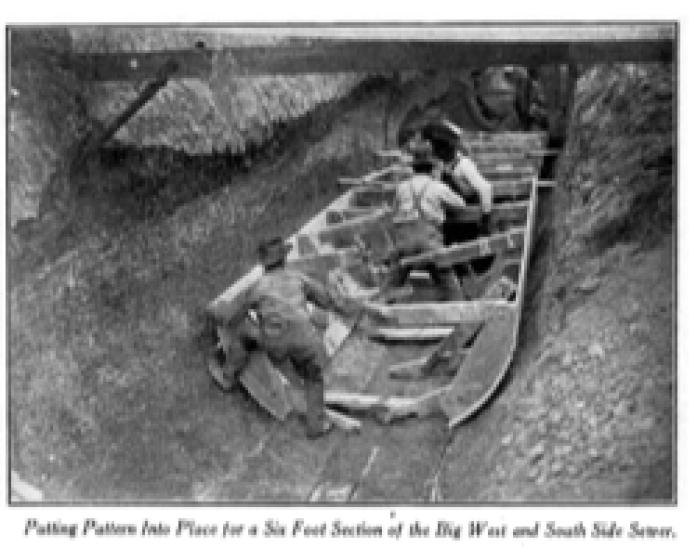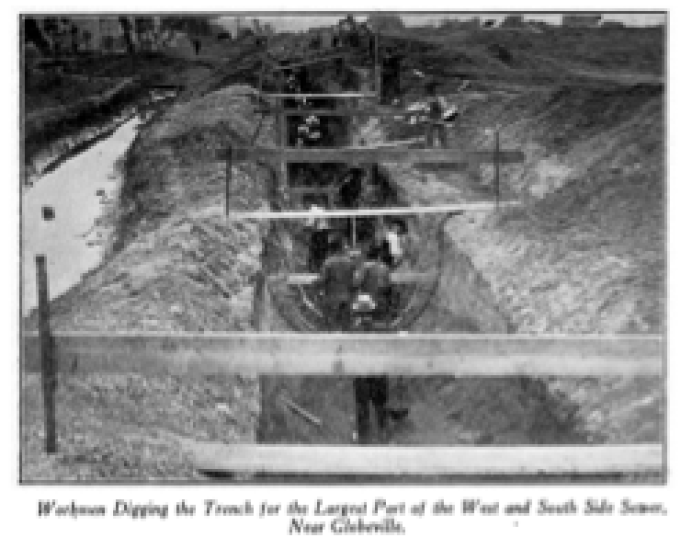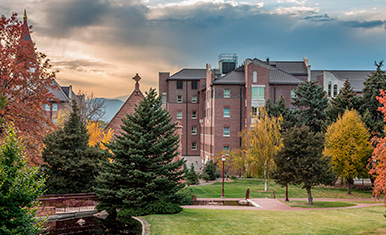The Color of Water in Colorado
This project works to engage government agencies, institutions of higher education on the topic, and communities of color in the realm of water and climate justice. Built upon Dr. Tom I. Romero, II’s path breaking article, The Color of Water: Observations of a Brown Buffalo on Water Law and Policy in Ten Stanzas , the project is building new pathways for local and state government agencies to partner with, collaborate on, and readily as well as meaningfully share data, develop research questions, and disseminate information with Colorado's under-served communities on issues of water. The scope of such issues are detailed well in the Spring 2020 issue of Headwaters Magazine: Pursuing Water Justice.
The project is initially focused in the largely northeast Denver metropolitan area where historic and contemporary water and air contamination concerns create distress and anxiety among the community's largely low-income racially minoritized residents. Using this specific area as a pilot and with institutions of higher education as a hub, the goals of the research are to strengthen the capacity of local and state government and civil society organizations to:
-
Partner and collaborate early in engaging community residents to raise, share, inform and develop meaningful data on issues of water justice impacting their community,
-
Reinforce cooperation among government agencies and under-served communities to create long-term trust and sustainable engagement;
-
Identify pathways for government-civil society organization partnerships to utilize and deploy the resources and expertise of Colorado's institutions of higher education to address racial and related inequities; and
-
Develop new and innovative methods and tools addressed to a wide range of stakeholders (including civil servants, educators, NGOs, youth leaders, etc.).
Part of a larger quest for "good governance" through meaningful community participation, the study will promote the role of government authorities, civil society organizations, and Colorado's institutions of higher education and their networks to empower the state's under-served communities.
-
A History of Northeast Denver
1930s: Lenders redlined the mainly immigrant occupies area of Northeast Denver, now known as the Globeville, Elyria, and Swansea (GES) neighbourhoods. Because of this, railroads moved in and the area became a popular site for industrial complexes.
1960s: Construction of Interstates 25 and 70 cut off the area completely from the rest of the metro Denver, further increasing traffic noise and air pollution. This project came at the expense of families who lived in the area, many of whom were approached about selling their homes to make way for the project with no consultation or education about its potential effects.
Present: Today, the neighbourhoods cut off by this highway build are roughly five degrees Fahrenheit hotter than the average Denver temperature and the Environmental Protection Agency's (EPA) lists four superfund sites within just five miles of the GES neighbourhoods.
Demographics: Latinx residents make up 84% of the Elyria- Swansea neighborhoods, and Globeville’s Latinx population is about 68%.
Health: A 2014 study discovered that, because of the concentration of pollution, people in GES are more likely to have health conditions like asthma, cancer, and heart disease. Based on 20210-2015 data, life expectancy of GES residents is nearly eight years shorter than the rest of the state. Residents living just a bit south of Globeville, in the Curtis Park area, tend to live more than eight years longer than their neighbors.1 And, a small bit northwest, past the Interstate 25 and Interstate 70 junction, and Denver resident’s life expectancy also grows by nearly 8 years. (Denver Dpt. of Ent’l Health 2017; Rodger 2021).
Author: Rachel Hot
-
Globeville Water Lines
With the digitization of records, historical research has been made a lot simpler. It is as easy as a quick Google Search to help find the information you need. That being said, not everything has made its way over to the digital world and sometimes you still need to make your way to the dusty archives of the public library to find clues that need to be pieced together to complete the information needed.
In researching the dates for when water and sewer lines were extended to the Denver neighborhoods of Globeville, Elyria-Swansea, and the city of Commerce City, I started where anyone else would; with a Google Search. But, as you can imagine, typing “when were water lines extended into Globeville, Denver?” produced over 100,000 results and few were actually relevant.
It was better to go to the source of information. For Globeville, that meant Denver Water and the City and County of Denver. After filing Colorado Open Records Acts (“CORA”) and discussions with the kind staff at Denver Water, I was left with patchy records, interesting maps, and vague remarks about water lines being laid in the early 1900s. The records included Annual Reports of Denver Water, which started in 1936, but by then the water lines had already been laid and any additional lines were laid piecemeal based on development.
The Denver Public Library had more relevant information online. Searching through the “Denver Municipal Facts” that are available through the Western Genealogy Resources, I was able to find that sewer lines were laid in 1910.
But the information on when the water lines were laid remained allusive. Thus, without the necessary resources being available online or through CORA requests, I took to the books, so to say.
That said, even the historical records tucked away in the basement of the library are not reliable. I found an undated, handwritten composite notebook that stated the Globeville water system was built as early as 1894. This was supported by a 1902 Denver Post article that states that residents of Globeville requested the Denver Board of Public Works to fix a hole in the Main Street of Globeville that was caused by a defect in a water main, which led to Globeville agreeing to turn over its water works to the board. The Globeville water works was purchasing its water supply form Denver Water Union Company, according to the article.
Author: Nicoli Bowley
-
Action Findings: Lead Poisoning and School Health
Two types of childcare institutions are particularly likely to find lead in their water delivery systems: At-home daycares and public schools serving traditionally marginalized communities. By analyzing construction dates of homes which host daycare centers, school siting decisions, and deep-rooted infrastructure discrimination, a pattern emerges about the risk of lead to Colorado’s children.
Solutions
The state already tried to address these issues through the Safe Water in Schools Act (SWISA). It didn’t work. It implemented a test-by-choice initiative, and most of the state’s schools simply chose not to test. In response, the Colorado People’s Alliance (COPA) proposed the filter-first, test-later initiative. COPA theorized that the solution to the problem is not through testing: it is to keep kids safe first by installing filters. Then we can test and act accordingly.
What is lead anyway?
Lead is metal that was commonly used to build water delivery systems in cities for thousands of years. It is loved for its malleability, abundance, and puncture resistance. However, lead presence in a human body can have significant detrimental impacts on cognitive development and functioning, as well as a variety of other physical health effects. In 1977, it was banned from use in paint. Finally, in 1991, the federal government banned its use in piping in the Lead and Copper Rule (LCR).
Sample Counties and Findings:
In order to understand what types of institutions are at risk, IRISE’s Color of Water team conducted research into the dates that schools and at-home daycare centers were built. The Safe Drinking Water Act put our cutoff date for construction at 1986: Buildings built after this date are at significantly lower risk of lead exposure. To get a broad overview of the state, IRISE looked at data for Adams, Durango, Pueblo, and Weld counties. School campuses with multiple buildings may have had multiple construction years - only the earliest build date will be considered for those schools. All data was compiled from public records provided by the county recorder's offices.
Author: Evan Weis
Sources:
H.B. 17-1306, 73rd Gen. Ass., 2017 Reg. Sess. (Co. 2017).
WATER QUALITY CONTROL DIVISION, SAFE WATER IN SCHOOLS ACT: ANNUAL REPORT TO LEGISLATURE (2020).
Denver Water, History of Lead in Drinking Water, LEAD REDUCTION PROGRAM (last visited Dec. 10, 2021), https://www.denverwater.org/your-water/water-quality/lead/history-of-lead-drinking-water.
-
Additional Resources & Ways to get Involved
Want to know exactly what’s in the water that flows from your taps? Then simply plug your zip code into the latest iteration of the Environmental Working Group’s (EWG) Tap Water Database.
Mission: COPA is a racial justice, member led- organization dedicated to advancing and winning progressive social change locally, statewide, and nationally. COPA builds power to improve the lives of all Coloradans through leadership development, organizing, and alliance building.
Work Highlight: In 2018 COPA created the Just Transition Table, which brought together labor, green, faith and community groups to build relationships across the different sectors and work on a plan to move Colorado to 100% just and equitable transition to a renewable energy economy.
Mission: Cultivando is an organization that serves the Latino community in Adams County and focuses on community leadership to advance health equity through advocacy, collaboration, and policy change.
Work Highlight: Cultivando was awarded $1.7 million in settlement money for their development and implementation of a plan to place air monitors around the Suncor refinery and is heavily involved in GES and Commerce City Air Quality Monitoring programs.
Mission: CPA is a member driven racial justice organization dedicated to building governing power in Colorado. CPA builds power by mobilizing voters, electing our own people to office, holding elected officials and corporations accountable, & working to put people before profit.
Work Highlight: Launched a digital voter outreach program targeting BIPOC in the Adams, Arapahoe, and Denver counties to ensure that all of the Colorado’s community was heard
Listen
Check out the IRISE RAGE Podcast episode featuring guest Miguel de la Torre, Director of the Center for Eco Justice at Iliff School of Theology and author of Gonna Trouble the Water: Ecojustice, Water, and Environmental Racism .
Suggested Readings
To deny water is to deny life
Gonna Trouble the Water considers the sacred nature of water and the ways in which it is weaponized against non-white communities. Firmly grounded at the intersection of environmentalism and racism, Gonna Trouble the Water makes clear the message: to deny water is to deny life.
With compelling contributions from scholars and activists, politicians and theologians -- including former Colorado governor Bill Ritter, global academic law professor Ved P. Nanda, Detroit-based activist Michelle Andrea Martinez, and many more -- Gonna Trouble the Water de-centers the concept of water as a commodity in order to center the dignity of water and its life-giving character.
Through literary, rhetorical, and historical analysis, Tributary Voices considers a more comprehensive approach to river management. The book examines nature writing, women’s narratives, critiques of dam development, the Latina/o communities’ appeals for river restoration, American Indian authors’ and tribal nations’ claims of water sovereignty, and teachings about environmental stewardship and provident living. This innovative study models an interdisciplinary approach to water governance and reinvigorates our imagination in achieving a more sustainable water ethic.

